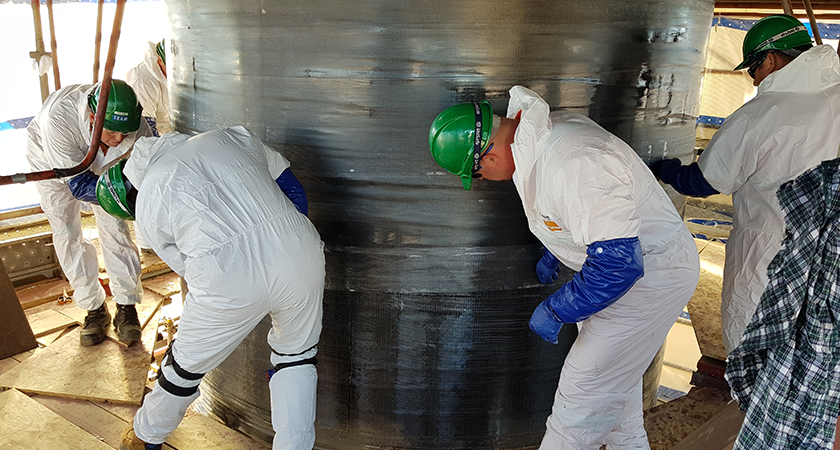Ready to Get Started?
Send us information on you, your company and your project. One of our experts will respond as soon as possible.

In the complex landscape of structural repairs, the choice between composite repair and traditional methods is often a critical decision that can significantly impact the longevity and effectiveness of a project. Each approach comes with its own set of advantages and considerations, prompting a closer examination to help you make an informed decision tailored to the unique needs of your project.
Composite repair involves utilizing advanced materials, typically fiber-reinforced polymers (FRP), to restore and enhance the structural integrity of damaged components. Leveraging the unique properties of composite materials, such as high strength-to-weight ratio, corrosion resistance, and versatility, this method offers several notable advantages:
However, it is important to consider the potential drawback of higher initial costs associated with the composite repairs.
Mechanical solutions entail the use of traditional materials and engineering techniques to repair or reinforce damaged structures. This method often incorporates the deployment of steel plates, bolts, or other mechanical components to impart strength and stability. Key advantages of traditional repair methods include:
Considerations such as weight and bulk, especially in comparison to lighter composite alternatives, and susceptibility to corrosion, particularly in harsh environments, are factors that warrant attention.
The decision between composite repair and mechanical solutions should be based on a thorough evaluation of your project’s specific requirements. Consider factors such as budget constraints, time sensitivity, the nature of the structure, and the long-term goals of the repair.
At TEAM, our expertise ensures precise and tailored repairs for your specific needs. Through a meticulous assessment of each case, we determine whether a composite repair or mechanical solution is best suited to address the issue, guaranteeing the proposal of the optimal solution. Our capabilities extend to offering detailed analyses of intricate defects, including pipeline dents and cracking. Once your structures are in service, we provide ongoing support by organizing and evaluating inspection data to uphold their integrity. Submit a composite repair request through TEAM’s Products and Services Portal today to navigate your project towards enduring success.
With TEAM's online Products and Services Portal, you can shop online for valves, pipeline products and make online requests for mechanical and composite repairs.
Access TEAM PSPSend us information on you, your company and your project. One of our experts will respond as soon as possible.